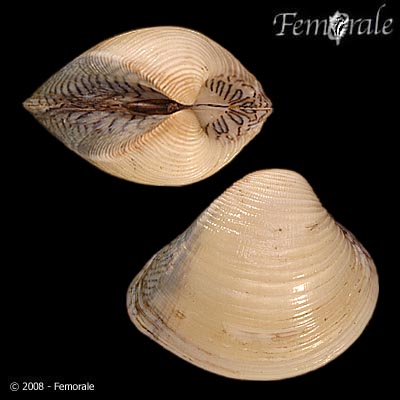| Veneridae (venus clams) |
| 3.657 cm SHL (male/unsexed); max. reported age: 3 years |
|
benthic; brackish; marine; depth range 0 - 5 m |
| Western Atlantic: Caribbean Sea to Brazil, subtropical south America; 16°N to 33°S. |
|
|
| Found in the intertidal zone to a depth of 1.5 m (Ref. 104267). Lives slightly buried in muddy sands of shallow water environments, particularly in mangrove lagoons (Ref. 81903). Adults prefer to settle in areas with fine or coarse sand where conditions are harsher during low tide (Ref. 104267). Strictly a filter-feeder (Ref. 104242). Suspension feeder (Ref. 105167). In general, suspension feeding bivalves mainly depend on phytoplankton and detritus material for nutrition (Ref. 107088). Sensitive to salinity variations but resistant to hypoxic conditions (Ref. 104267). Associated with a crab (Refs. 104147, 105309), bivalve and polychaetes (Ref.105309). |
|
Not Evaluated (N.E.) Ref. 123251)
|
|
|
Source and more info: www.sealifebase.org. For personal, classroom, and other internal use only. Not for publication.

